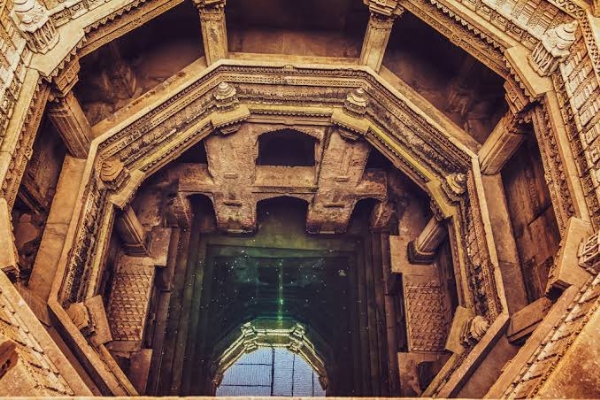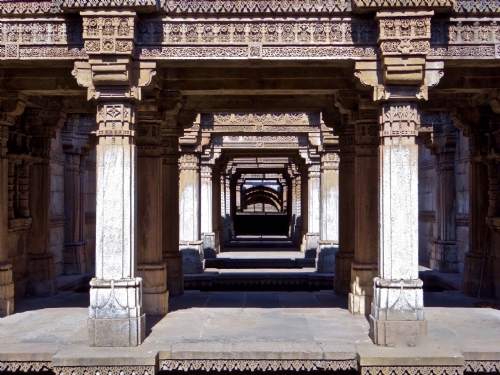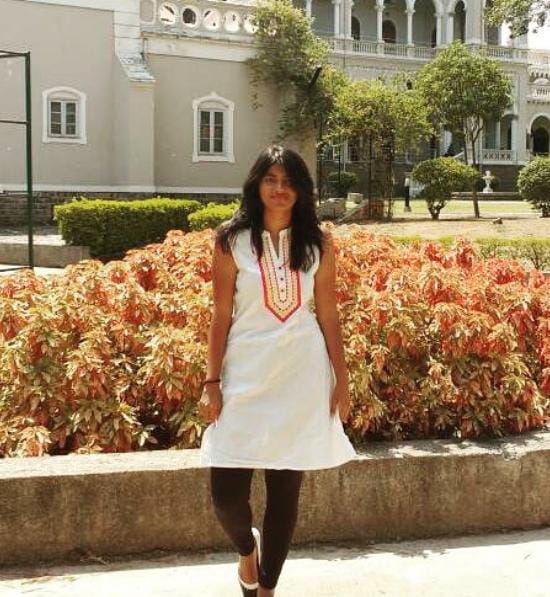Adalaj Ni Vav: 15th century architecture, an example of sheer brilliance of Indian engineers & architects
This stepwell is a magnificent structure built skillfully, to fix the water crisis in and around Adalaj village
Total Views |
Built in the 15th century, the stepwell we are exploring today has seen many important events in history unfolded before it, and because of it. The stepwell has also made many lives easier, by mending the water crisis of the city. Adalaj Ni Vav or Adalaj stepwell is a magnificent structure built skilfully, to fix the water crisis in and around Adalaj village. The stepwell is located around 3-4 kms to the south-west of Gandhinagar, Gujarat. It was built in 1498, and is one of the several step wells built in India providing access to groundwater. The architecture of this stepwell is an excellent example of the sheer brilliance of the engineers, architects India at that time in history.

Due to this change, two different styles of architecture are seen here in the structure. When Adalaj Stepwell was built completely, queen Rudabai committed suicide by jumping in this well. Hence, this well is also famously known as the Rudabai Stepwell.
Did you know - According to local legend, the spirit of queen Rudabai still haunts this stepwell, even today.
This depth was maintained to access groundwater. Each floor was designed to be spacious and well ventilated and sufficiently lit. On the first floor, there is a marble slab with an inscription in Sanskrit signifying the establishment of this structure.

The ceiling of the stepwell has an opening which allows entry of light, air into the premises. But the construction makes sure that direct sunlight doesn’t touch steps or landings (except for a while at noon). This allows the temperature inside this well to be around 6 degrees cooler than the outside.

History | The history of this stepwell is full of twists and turns. The construction of Adalaj Ni Vav was started by Rana Veer Singh of Vaghela Dynasty, Dandai Desh in 1498. The thoughtful decision of building this stepwell was made to curb the water crisis in Adalaj. At the time, the people of Adalaj would have to walk miles to fetch water for their daily needs. After establishment of the structure, Singh was killed in a battle against a Muslim King, Sultan Mahmud Begada.
After Rana Veer Singh's death, Sultan Mahmud Begada met his widow - Queen Rudabai. He fell for her & wished to marry her. When he ordered her to be his wife, the queen had no option but to accept his proposal. But she put forth a condition to Begada - that the work of the stepwell that was started by her late husband gets completed. The Sultan accepted her condition and willingly took efforts to complete the construction of Adalaj Stepwell.
Hindu King Rana Veer Singh started construction of the Adalaj ni vav to provide relief to his people in this arid region, who had to walk miles for water. However, before it was finished, he entered into a war with neighboring Muslim King Mehmud Begada. pic.twitter.com/oLk9cPOnki
— Lost Temple's (@Lost_Temples) December 24, 2021
Due to this change, two different styles of architecture are seen here in the structure. When Adalaj Stepwell was built completely, queen Rudabai committed suicide by jumping in this well. Hence, this well is also famously known as the Rudabai Stepwell.
Did you know - According to local legend, the spirit of queen Rudabai still haunts this stepwell, even today.
Also Read | Hutheesing Jain temple: the ultimate architectural marvel of Ahmedabad
Architecture | The structure is a graceful combination of two distinct architecture styles, the Solanki and Islamic style. The stepwell is 5 storeys deep and is made entirely of sandstone. It has a traditional system with an octagonal top built on intricately carved pillars.
This depth was maintained to access groundwater. Each floor was designed to be spacious and well ventilated and sufficiently lit. On the first floor, there is a marble slab with an inscription in Sanskrit signifying the establishment of this structure.

The topmost part of the stepwell is a structure with only engraved beams and pillars and no roof. This allows enough light to enter. There are 3 staircases leading to the bottom water level of the stepwell. The landing has four small rooms, one in each corner. The bottom of the well consists of a square step-like structure that descends in the shape of a funnel and reaches a defined circular well. Each square floor is adorned by beautifully carved pillars, beams and arched openings that spiral from the top to the bottom.
Also Read | Ratneshwar Mahadev Temple: the enigma of Varanasi
The traditional floral designs of the Islamic origin can be brilliantly combined with the carvings of the Hindu and Jain deities. These patterns can be seen on all the floors. There are carvings of a king overlooking his subjects, dancers and musicians performing in front of spectators, etc. A few unique features in these carvings are the depiction of Ami Khumbor symbolising the pot of water of life, the tree of life or Kalp Vriksha and the Navagraha or 9 planets.
The ceiling of the stepwell has an opening which allows entry of light, air into the premises. But the construction makes sure that direct sunlight doesn’t touch steps or landings (except for a while at noon). This allows the temperature inside this well to be around 6 degrees cooler than the outside.
Bharati Web







